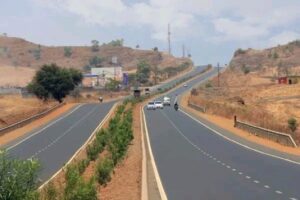Claim: The country loses about 60 million trees – some 330 000 hectares of forests – every year.
Source: Vic Falls Live
Verdict: Misleading – this figure is from 2011, current figure stands at 262 000ha.
In an article headlined, “Rising Demand for Charcoal Threatens Matabeleland North Forests’, the Victoria Falls Live publication made a claim that “the country loses about 60 million trees – some 330 000 hectares of forests – every year’.
Timber harvesting (Source: Online)
According to the United Nations Food and Agriculture Organisation, 40.4% or about 15,624,000 ha of Zimbabwe is forested. Of this 5.1% ( 801,000 ) is classified as primary forest, the most biodiverse and carbon-dense form of forest. Zimbabwe had 108,000 ha of planted forest.
However, between 1990 and 2010, Zimbabwe lost an average of 327,000 ha or 1.48% per year. In total, between 1990 and 2010, Zimbabwe lost 29.5% of its forest cover, or around 6,540,000 ha.
But this was in 2010.
According to other sources, it was estimated that between 1990 and 2005, the country lost 21.1% of its forest cover, at the time, this was equivalent to 4 694 000 hectares. The Forestry Commission of Zimbabwe (2011) found that the country was losing about 330 000 hectares of forest per annum. At that rate of forest loss, it was estimated that Zimbabwe could lose all its forests within 52 years.
Post analysis of the 2000 Fast Track Land Reform Programme estimated that about 70 000 ha of Zimbabwe’s forests were lost to agricultural activities mainly crop production each year.
Expert opinion
Zimbabwe’s forests are managed by the Forestry Commission of Zimbabwe, which is a parastatal under the Ministry of Environment, Climate, Tourism and Hospitality Industry.
The Commission is responsible for the regulation, management and conservation of forest resources.
The Commission’s Information and Communications Manager, Violet Makoto told FactCheckZW that there are a number of factors contributing to deforestation.
“We have an estimated 262 000 ha per annum deforestation rate. One of the main drivers now is agricultural activity. There is an expansion of land for agricultural purposes and people preparing land cut down a lot of trees. Within this sector we also find the tobacco growers who contribute quite a significant chunk to deforestation, especially at the curing stage.
“We attribute 15-20% of forests being lost per annum to tobacco growers in the country where there is a lot of use of indigenous wood,” she said.
Curing is the process of drying tobacco leaves after harvesting from the field. The process involves burning woods continuously or intermittently at low flame for weeks to dry tobacco leaves. Fire curing produces a tobacco low in sugar and high in nicotine. Pipe tobacco, chewing tobacco, and snuff are fire-cured.
She said mining is also an emerging driver of deforestation.
“Mining supersedes all other economic activities in our national legislation. Wherever there are minerals, even if these are forest areas, you will find that people are going there. And we are not only taking of the formal mining sector, illegal artisanal mining is also contributing quite a lot.
Artisanal mining (Source: Online)
You go to Shurugwi there is chrome mining.
Just close to Harare in Mazoe, there is a high demand for timber to support the dry milling of gold in that area,” she said.
Environmental expert, Stanley Mawoko says using firewood to cure tobacco is environmentally unsustainable.
“A farmer will gather firewood for his tobacco curing from indigenous Msasa trees, also known as Zebrawood. These take 30 to 50 years to mature. There is no way that we can be able to replace these trees at the rate at which they are being cut down,” he said.
The Tobacco Industry and Marketing Board says it is working on mitigating the impact of the sector on deforestation.
“The TIMB is working with various afforestation organisations to help establish eucalyptus plantations whose eventual use would be for curing tobacco. For the 2021 and 2022 seasons, 225 hectares (555 acres) of wood loads of eucalyptus trees have been established, and this should go a long way to reduce deforestation,” TIMB’s public affairs officer, said.
Conclusion
The 330 000 hectares per annum mentioned by Vic Falls Live appears in research and reports from 2011, that some experts, like the one used by the publication quote. The current estimate from the Forestry Commission is 262 000ha of forest lost per annum. The claim has been rated misleading as it is an outdated figure, rather than False, which would have been the case, if it was not mentioned in any reports.











